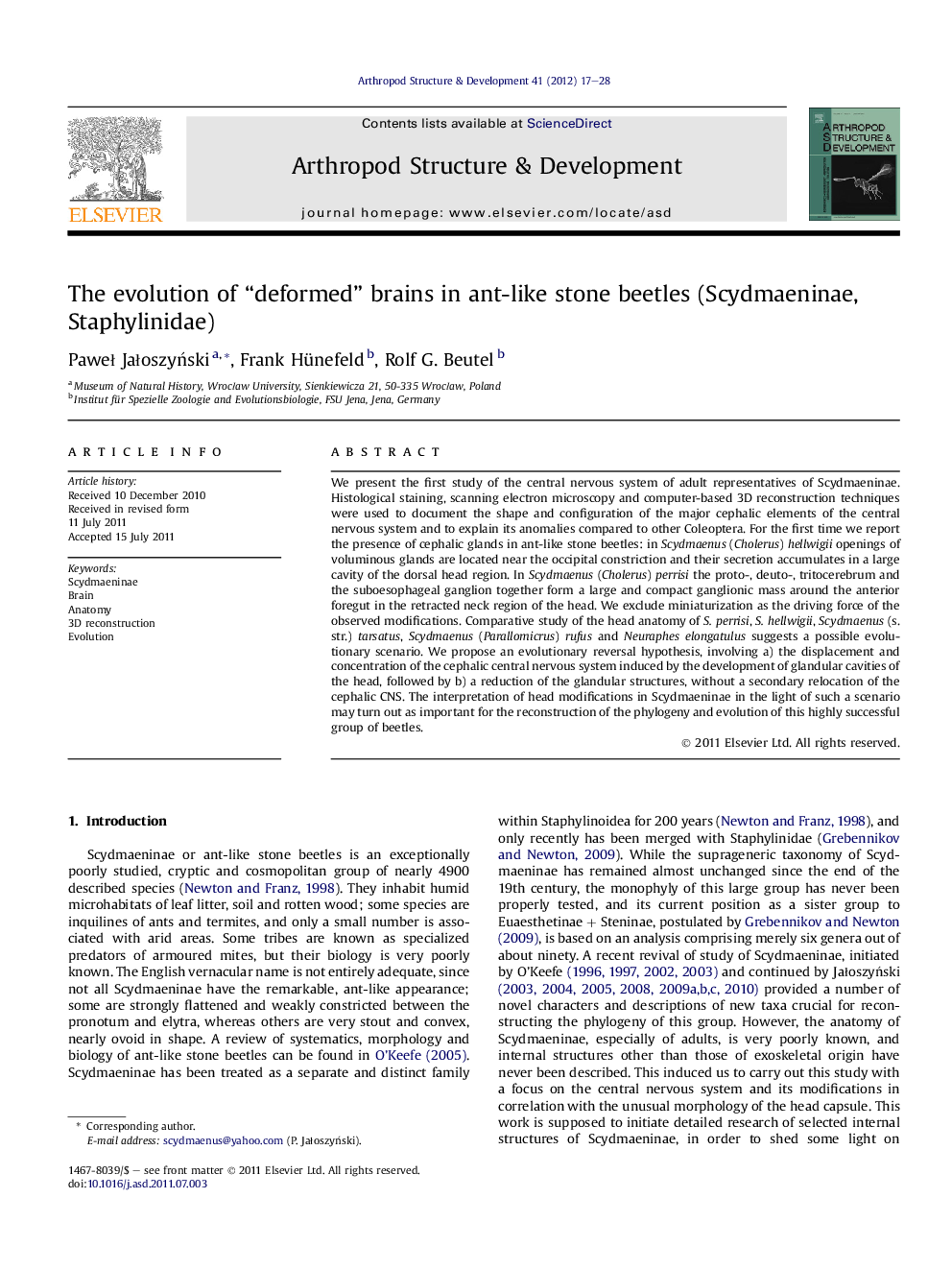| Article ID | Journal | Published Year | Pages | File Type |
|---|---|---|---|---|
| 2778704 | Arthropod Structure & Development | 2012 | 12 Pages |
We present the first study of the central nervous system of adult representatives of Scydmaeninae. Histological staining, scanning electron microscopy and computer-based 3D reconstruction techniques were used to document the shape and configuration of the major cephalic elements of the central nervous system and to explain its anomalies compared to other Coleoptera. For the first time we report the presence of cephalic glands in ant-like stone beetles: in Scydmaenus (Cholerus) hellwigii openings of voluminous glands are located near the occipital constriction and their secretion accumulates in a large cavity of the dorsal head region. In Scydmaenus (Cholerus) perrisi the proto-, deuto-, tritocerebrum and the suboesophageal ganglion together form a large and compact ganglionic mass around the anterior foregut in the retracted neck region of the head. We exclude miniaturization as the driving force of the observed modifications. Comparative study of the head anatomy of S. perrisi, S. hellwigii, Scydmaenus (s. str.) tarsatus, Scydmaenus (Parallomicrus) rufus and Neuraphes elongatulus suggests a possible evolutionary scenario. We propose an evolutionary reversal hypothesis, involving a) the displacement and concentration of the cephalic central nervous system induced by the development of glandular cavities of the head, followed by b) a reduction of the glandular structures, without a secondary relocation of the cephalic CNS. The interpretation of head modifications in Scydmaeninae in the light of such a scenario may turn out as important for the reconstruction of the phylogeny and evolution of this highly successful group of beetles.
► Novel type of anomalous concentration of cephalic CNS described. ► First finding of cephalic glands in Scydmaeninae. ► Cephalic glands influence the internal anatomy of the head in Scydmaenus. ► Reversal scenario explains cephalic CNS modifications. ► Internal head anatomy clarifies polarities of puzzling external characters.
